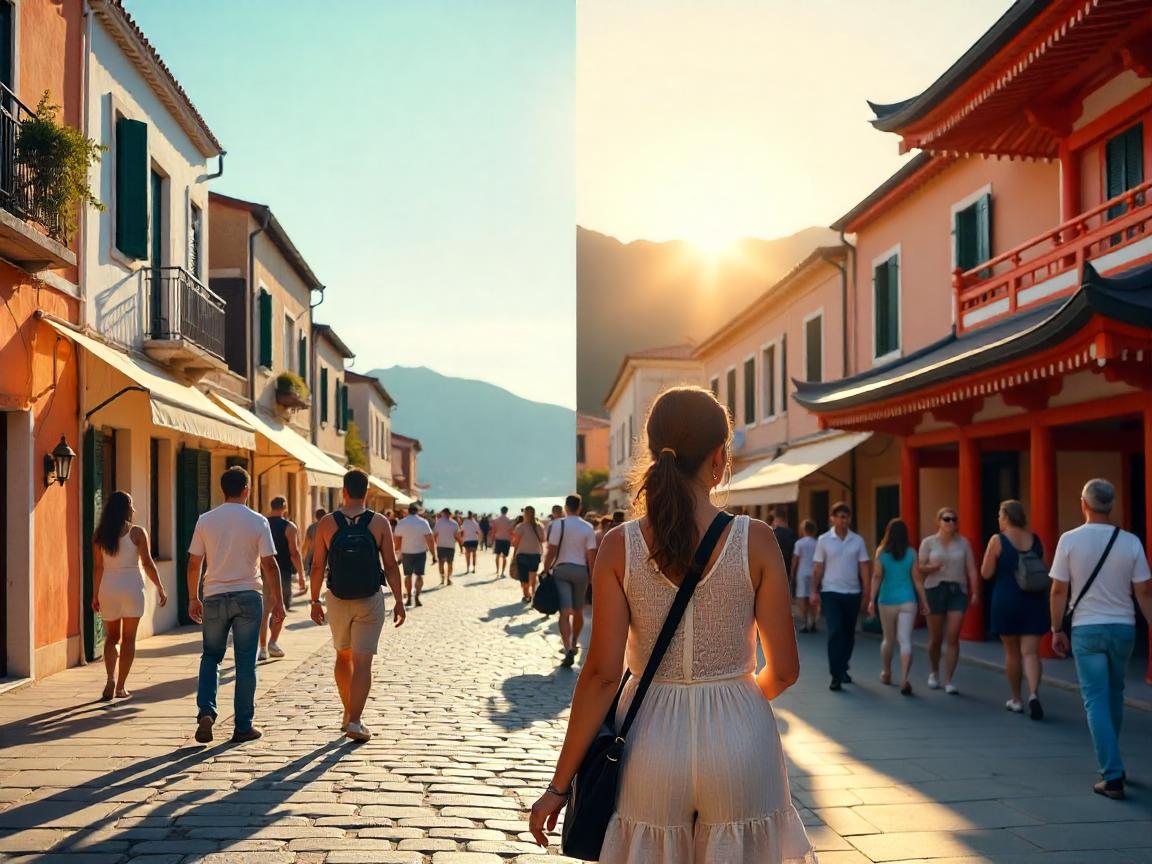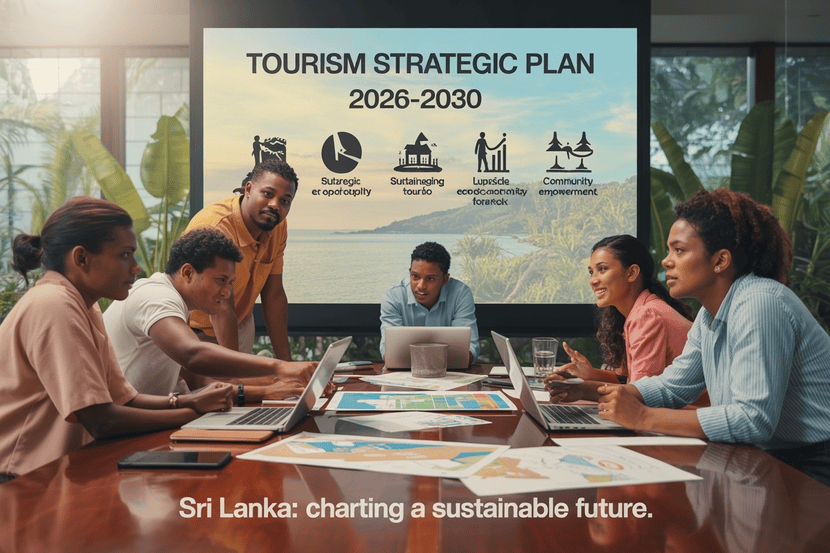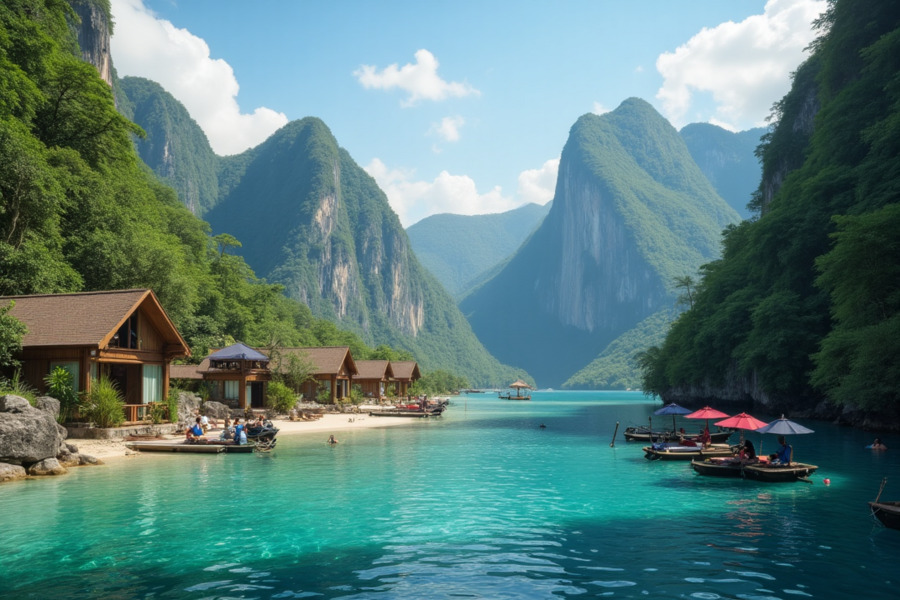≡-Recreation or Hell for Holidayers, How Overtourism Turns Your Dream Vacations into Nightmare Across New Zealand, Japan, Italy, Greece, Spain, Indonesia, Croatia, Hidden Truth Behind This – Viral of Today
<> Viral of Today <>
Home » European Travel News » Recreation or Hell for Holidayers, How Overtourism Turns Your Dream Vacations into Nightmare Across New Zealand, Japan, Italy, Greece, Spain, Indonesia, Croatia, Hidden Truth Behind This Wednesday, July 16, 2025Few words sparkle in the imagination quite like “holiday.” The mere thought conjures visions of Santorini’s whitewashed cliffs blazing in the sun, Venice’s gondolas gliding through silent canals, or Japan’s cherry blossoms drifting like pink snow. We dream of calm beaches in Bali, quiet streets in Bruges, and the crisp air of New Zealand’s mountain trails. For years, these destinations have promised not just beauty but escape—a chance to step outside ordinary life and into a postcard-perfect reality.But for countless travelers in 2025, the reality has grown far more complicated. What was meant to be recreation has, in many places, morphed into chaos. Overtourism has flooded streets, packed piazzas, and turned once-peaceful paths into human traffic jams. Places like Italy, Greece, Spain, Indonesia, Japan, Croatia, Belgium, Norway, the UK, and New Zealand now face a painful question: can paradise survive when millions arrive all at once?Locals are exhausted. Governments are scrambling to control the crowds. And visitors find themselves caught between longing and frustration. The hidden truth is that these beautiful places are buckling under the weight of their own popularity. The world has grown smaller, travel more affordable, and wanderlust insatiable. Yet with each cheap flight and viral travel video, the delicate balance that keeps these places magical grows ever more fragile.This is the untold story behind the glossy images—the harsh collision between dreams and reality, where holidays risk becoming hellish ordeals instead of the escape we all crave. Tourists once gazed longingly at images of Europe’s turquoise seas, pastel villages, and ancient streets. But in 2025, that shimmering vision is colliding with a tidal wave of reality.Across Italy, Greece, and beyond, Europe’s most beloved holiday havens are cracking under the weight of relentless crowds. Locals are protesting. Mayors are drafting emergency laws. And travelers are posting viral videos of chaotic scenes where fantasy crumbles into frustration.This is overtourism on an epic scale. And it’s reshaping not only how Europe operates—but how travelers dream.Crowds Swallow Lake Como and VarennaLake Como, Italy. Once a serene canvas of glassy waters and quiet lakeside promenades, it has transformed into a crowded maze.Visitors arriving this summer are greeted not by romantic strolls along cobblestone paths, but by human gridlock. Lines for ferries stretch over an hour. Coastal pathways crawl at a snail’s pace as tourists shuffle shoulder-to-shoulder.Even Varenna, a picturesque village famed for its rainbow-colored houses and narrow lanes, finds itself drowning in bodies. Travelers complain they can barely lift a phone for photos without elbowing through walls of people.It’s a stark contrast to images circulating just a couple of years ago—photos that showed peaceful waterfronts and empty streets under the Mediterranean sun.Portofino’s Secret Beaches Are No Secret AnymoreFurther along Italy’s Ligurian coast, Portofino has long sold itself as an exclusive slice of paradise.But exclusivity has become impossible. Videos show once-secluded beaches now overrun with crowds. Locals lament that even “secret spots” are secret no more.Travelers flock to Portofino for its vibrant piazzas and tucked-away coves. Instead, they’re finding jam-packed beaches, endless queues, and so many people that some simply turn around and leave in disappointment.Social media is awash with posts comparing dreamlike expectations to crushing reality. The viral images sting: picturesque views split by seas of tourists wielding selfie sticks.The Summer Europe Groaned Under Tourist CrowdsFew regions have felt the weight of overtourism more than Europe. The summer of 2025 exploded with scenes of frustration, as tourists and locals clashed over who truly belongs in these ancient cities.Spain’s streets became battlegrounds. In Barcelona, residents armed themselves with water guns and flares, spraying visitors who dared wander into local neighborhoods. Across the Balearic Islands, banners appeared reading “Tourists Go Home,” as locals struggled with skyrocketing rents and crowded beaches.Spain welcomed 94 million visitors in 2024—a record number, but also a social breaking point. Locals feel like prisoners in their own cities. Infrastructure groans under the strain. And the simple act of living has become increasingly impossible for many Spaniards.Italy tells a similar tale. Florence banned golf carts from its historic center because tourists clogged narrow streets meant for pedestrians. Venice introduced a €5–€10 entrance fee for day-trippers and started banning tour groups from pausing at scenic hotspots to avoid human traffic jams. Even Lake Como, once a serene jewel of Northern Italy, saw 4.8 million overnight visitors in 2023, sparking cries for a visitor cap to preserve its fragile ecosystem.Greece’s Sunsets Come at a CostFor decades, Greece has sold an irresistible fantasy. Brilliant white buildings cascade down volcanic cliffs, framed by sunsets so perfect they look unreal. But in 2025, the fantasy is cracking under the weight of sheer numbers.Santorini, the darling of influencers and cruise lines, has become a human tide. Narrow alleys once meant for donkey carts now funnel thousands of visitors per day, making movement nearly impossible. Locals and officials are floating the idea of a “saturation law” that would impose daily caps on visitor numbers.Even islands like Corfu, which historically catered to a mix of travelers, are shifting their strategy. Leaders now want to attract fewer, wealthier tourists, hoping high-spending visitors will bring revenue without overwhelming the local way of life.Across Greece, the tension is palpable. Tourism is the lifeblood of the economy, but it’s devouring the soul of the islands many people travel so far to experience.Venice: The Epicenter of OvertourismNo city on earth symbolizes overtourism like Venice. Once a place of quiet canals and mystical fogs, Venice has become a poster child for what happens when the world shows up all at once.The numbers are staggering. During peak season, Venice can see 30,000 cruise passengers in a single day, spilling into alleys, flooding piazzas, and clogging bridges. Local life has become unsustainable. Grocers struggle to keep shelves stocked, waste piles up faster than it can be collected, and the fragile historic structures suffer under relentless footfall.In response, Venice introduced a controversial entrance tax for day-trippers, charging €5 to €10 depending on the day. Officials insist the money funds vital preservation projects, including canal maintenance and crowd control. In 2024 alone, the tax raised €2.4 million.Still, many believe it’s only a temporary solution. Unless deeper changes happen, Venice risks becoming a theme park instead of a living city.Asia’s Sacred Spaces Face an OnslaughtOvertourism isn’t Europe’s problem alone. Across Asia, iconic sites are drowning under visitor numbers that would have been unthinkable a decade ago.In Japan, Kyoto’s serene temples are now the stage for chaos. Tour buses disgorge streams of visitors, who push through bamboo groves and jostle for photos at sacred shrines. Nara’s deer, once symbols of gentle harmony, have become aggressive in seeking snacks from overwhelmed tourists.Japanese authorities have imposed measures to steer crowds along controlled routes and to restrict large group tours in certain districts. But local resentment simmers beneath the surface. Many Japanese worry that tourism’s economic benefits are being outweighed by cultural degradation and environmental harm.Indonesia’s Bali faces similar issues. Once a backpacker’s paradise, Bali now sees mass tourism on an industrial scale. Beaches overflow, waste management systems crack under the strain, and locals have protested the transformation of spiritual sites into Instagram photo ops. In 2024, Bali introduced a tax of IDR 150,000 (~$10 USD) to help fund sustainable tourism efforts and manage environmental damage.Oceania: New Zealand Draws Its LineIn the Southern Hemisphere, New Zealand has long been heralded as one of the world’s most pristine destinations. But even here, overtourism has become a problem that can no longer be ignored.Queenstown, Fiordland, and Mount Cook National Park have seen record-breaking visitor numbers since pandemic restrictions lifted. Local residents now battle housing shortages, traffic jams, and environmental damage caused by hordes of hikers and road-trippers.In response, New Zealand tripled its tourist levy in 2024. The funds go directly toward conservation efforts and infrastructure improvements. Yet debates rage over whether the new fees might deter the very travelers whose dollars help keep local communities afloat.Norway and the Quest for BalanceIn Europe’s north, Norway stands as a testament to both the blessings and burdens of tourism. The country recorded 38.6 million overnight stays in 2024—a historic high. While tourism fuels the economy, it’s also placing delicate ecosystems under threat.The fjords are particularly vulnerable. Narrow valleys echo with the rumble of tour buses, and once-silent paths are now crowded with hikers seeking the perfect shot for social media. Municipalities across Norway have been granted the right to impose a 3% tourist tax to help mitigate the impact.The revenue aims to maintain trails, manage waste, and protect natural heritage. But as with other countries, officials walk a tightrope: too high a tax might scare away visitors; too low risks permanent environmental damage.The Root Causes: Why the World is OverrunTo understand overtourism, we must look beyond sheer numbers. This crisis has grown from a perfect storm of forces reshaping global travel.One of the biggest drivers is social media. Instagram, TikTok, and YouTube have transformed once-unknown spots into viral sensations overnight. A hidden cove, a quaint alleyway, or a quiet overlook can become flooded within weeks after appearing in a viral reel.Cheap travel has also fueled the crisis. Low-cost carriers like Ryanair, easyJet, and Scoot have slashed prices, making spontaneous weekend trips commonplace. The global middle class has expanded dramatically, unlocking new travel opportunities for millions who previously couldn’t afford to go abroad.Cruise ships exacerbate the problem. They unload thousands of passengers into fragile destinations for mere hours. Local economies often see little benefit, as many tourists return to the ship for meals and accommodations. Yet the infrastructure cost remains for the communities left behind.Short-term rentals like Airbnb have added another layer of complexity. Entire city blocks in Florence, Barcelona, and Dubrovnik have shifted from local housing to tourist accommodation, driving up rents and driving locals out.Cities Strike Back: The Rise of Tourist TaxesAcross the world, governments have begun deploying their weapon of choice: tourist taxes. These range from modest nightly surcharges to hefty entrance fees. The goals vary but share common threads:Fund Infrastructure: Cities like Venice use tax revenue to preserve cultural heritage and clean up after tourists.Limit Numbers: Taxes can discourage mass day-tripping, especially from cruise ships.Protect Residents: Funds help maintain public services strained by visitor influx.Encourage Quality Over Quantity: Higher costs tend to attract fewer but higher-spending tourists.But taxes alone won’t solve overtourism. Critics warn they risk transforming iconic destinations into luxury playgrounds, accessible only to wealthy travelers.The Human Cost of OvertourismBeyond economics and policy, overtourism has a deeply human dimension. Locals feel alienated in their own cities. Businesses once serving communities now cater entirely to tourists. Cultures risk being reduced to performance pieces for visitor entertainment.Meanwhile, travelers themselves are discovering that the dream may not match reality. TikTok is filled with “expectation vs. reality” clips showing crowds swarming places once thought magical and serene. Disillusionment is growing.People still want to travel. They crave the magic that comes from discovering new places, meeting strangers, and seeing wonders firsthand. But increasingly, they’re forced to grapple with the ethical and practical implications of those choices.Can Sustainable Tourism Save the Day?Many experts argue that the answer isn’t less tourism—but better tourism. Sustainable travel seeks to distribute visitors more evenly, promote off-season travel, and encourage longer stays that benefit local economies.Destinations like Slovenia and Portugal’s Alentejo region are emerging as alternatives to Europe’s overcrowded giants. Bhutan remains a model for high-value, low-impact tourism, though its steep daily fees make it accessible only to the privileged few.Technology may offer tools to manage flows. Real-time crowd monitoring, timed entry tickets, and digital visitor caps are already being trialed in places like Amsterdam and Kyoto.The Road AheadAs 2025 unfolds, one truth is clear: overtourism isn’t going away on its own. The forces driving it—social media, affordability, global wanderlust—are too powerful to simply reverse.Yet the crisis offers an opportunity to rethink how we travel. Tourists can choose lesser-known spots, respect local communities, and accept that the perfect Instagram shot might come at the cost of someone else’s peace.Governments must keep experimenting with policies that protect both heritage and livelihoods. And businesses, from airlines to tour operators, must embrace a future where sustainability isn’t optional—it’s survival.A Choice for Travelers EverywhereThe world remains beautiful. Venice’s canals still sparkle at dawn. Santorini’s sunsets still ignite the sky. Kyoto’s shrines still hum with quiet reverence. But experiencing these wonders now demands patience, respect, and sometimes a willingness to explore the road less traveled.Because travel is not merely about what we see—it’s about how we leave the places we visit. In the age of overtourism, that choice has never mattered more.The “Tourist Hunger Games” in PositanoOn Italy’s Amalfi Coast, Positano stands as a jewel of travel fantasy. Yet its pastel buildings and cascading stairs are groaning under the weight of visitor numbers.Tourists describe their experiences like a battlefield. It’s the “tourist hunger games,” one called it, showing endless lines winding through narrow streets.Travelers arrive hoping for tranquil sunbathing and leisurely shopping. Instead, they encounter dense crowds, fully booked restaurants, and a crush of people that makes wandering nearly impossible.One traveler confessed she’d long dreamed of visiting Positano. She expected the steep steps, but not the overwhelming tide of humanity. Now, even planning a day there requires booking every meal, every activity, and every spare moment—months in advance—or risk missing out entirely.Santorini’s Sunset StampedeGreece is no stranger to tourism booms. But even seasoned locals are stunned by what’s happening in Santorini.This iconic island, world-famous for its whitewashed houses and cobalt domes, has become a claustrophobic maze. Footage from this summer shows thousands inching through narrow lanes, sweat-soaked and exhausted, unable to stop without blocking those behind them.Two years ago, travelers scoffed at cruise ship crowds. Now, many admit they’ve become part of the problem. The magic fades when sunsets become a competitive sport for a few square feet of viewing space.What should be an intimate experience of natural beauty is turning into an exhausting ordeal.The Impact on LocalsWhile tourists feel the pinch of overcrowding, local communities bear the heaviest burden.Residents struggle with soaring prices, jammed infrastructure, and the sheer exhaustion of sharing their hometowns with waves of strangers. For many, daily life becomes unrecognizable as streets once filled with neighbors now overflow with travelers searching for Instagram-worthy shots.Small towns like Portofino and Varenna were never built to handle millions of visitors. Their roads, sewer systems, and public spaces buckle under the strain.Locals mourn the loss of community spaces, while business owners grapple with an uncomfortable truth: tourism brings money—but it also brings chaos.A World Overrun: How Overtourism and Tourism Taxes Are Redrawing the Global Travel MapOnce upon a time, travelers imagined Europe’s sunlit plazas, Bali’s serene temples, and Iceland’s empty landscapes as havens of beauty and freedom. But the fantasy is colliding with an undeniable reality. Overtourism has become one of the travel industry’s most pressing crises, and cities around the globe are fighting back.From water-gun protests in Spain to hefty new taxes in Venice, authorities are scrambling to control the crowds while still welcoming tourism’s economic benefits. Meanwhile, travelers are caught in the middle, confronting rising costs and shifting rules that might change how—and where—they roam the world.Crowds Swarm Europe’s Dream DestinationsThe summer of 2025 has brought scenes few could have predicted. In Barcelona, protesters armed with water guns and smoke bombs have chased away tourists from neighborhoods they once cherished. “Tourism is terrorism,” graffiti screams across historic walls, as residents rage against packed streets and soaring rents.Spain’s tourism machine brought in a record 94 million visitors in 2024—nearly twice the nation’s population. Yet the sheer weight of those numbers has sparked an identity crisis. Locals are left wondering if their cities exist for them or for Instagram feeds.In Italy, the situation is just as tense. Venice, Florence, and Lake Como once symbolized Italian romance and culture. Now, they symbolize bottlenecks of humanity. Florence has banned golf carts from its narrow historic center to protect pedestrians. Lake Como, overwhelmed by 4.8 million overnight visitors in 2023, is pondering new levies to protect its fragile shores.Greece, too, has joined the chorus of alarm. In Santorini, thousands squeeze through alleys designed for donkey carts, not cruise ship surges. The island is debating a new “saturation law” to limit daily tourist arrivals. Even Corfu is pivoting toward luxury tourism, seeking fewer but wealthier guests to reduce strain on its natural resources.Venice: The Cautionary Tale of OvertourismVenice may be the world’s poster child for overtourism. Once a mystical city of quiet canals, it’s now under siege from mass tourism’s tide. In 2025, Venice reinstated a controversial day-tripper tax, charging €5 to €10 for visitors who arrive but don’t stay overnight.Authorities insist the funds will maintain infrastructure, clean the canals, and preserve the city’s heritage. The tax is also designed to discourage the crush of short-term visits, especially from cruise ships that unload thousands of passengers at once.Despite some complaints, the measures seem to be working. In 2024, the tax raised €2.4 million, offering hope that Venice might balance tourism with preservation. Yet critics warn it’s only a Band-Aid unless deeper changes occur.The Quiet Anger in Bruges and BeyondVenice isn’t alone. Bruges, Belgium—a storybook city famous for its canals and medieval architecture—is contemplating its own €4 day-trip tax. Locals have grown weary of tour buses clogging narrow streets and visitors swarming chocolate shops.Norway, dealing with record-breaking 38.6 million overnight stays in 2024, announced a nationwide 3% tourist tax to protect delicate natural landscapes. In the UK, Edinburgh will roll out a 5% city tax in 2026. Wales is preparing to follow suit in 2027, imposing modest fees on hotel stays, hostels, and campsites.These measures reflect a shift in how destinations think about tourism—not simply as a money-maker but as a force that needs active management to avoid cultural and environmental collapse.Asia’s Battle with Too Many TouristsOvertourism isn’t confined to Europe. Across Asia, popular destinations are struggling to hold back tidal waves of visitors.Bali introduced a new tax of IDR 150,000 (about $10) for every arriving tourist in 2024. Authorities want to fund sustainability efforts, improve waste management, and protect Bali’s unique culture.In Bhutan, the government doubled down on its strict tourism policy. The Himalayan kingdom now charges visitors up to $200–$250 per day in sustainable development fees. It’s a move to protect fragile ecosystems and maintain Bhutan’s focus on “high-value, low-impact” tourism.Iceland, once a hidden gem, reimposed its own tourist taxes after visitors surged past pre-pandemic levels. Officials warn that the island’s delicate environment can’t withstand unchecked growth without proper funding.Tourist Taxes: The Global TrendOne common thread unites these diverse responses: money. Countries and cities are realizing that tourism comes with costs—from repairing worn infrastructure to managing waste and preserving cultural sites.Tourist taxes, levies, and entry fees have become the go-to solution. They serve several key purposes:Funding infrastructure: Venice uses tax revenue to clean canals. Norway plans to direct funds toward maintaining national parks.Regulating visitor numbers: Taxes discourage day-trippers who contribute little to local economies while straining public services.Protecting local communities: In Barcelona and Amsterdam, taxes help subsidize affordable housing and public transit.Encouraging sustainable tourism: High fees, like Bhutan’s, shift tourism toward travelers who are willing to spend more and stay longer.The Double-Edged Sword of Tourist TaxesYet tourist taxes spark fierce debate. Critics warn they risk driving away budget-conscious travelers and harming small businesses reliant on visitor traffic.In Spain’s Balearic Islands, the “bed tax” on accommodations led to a noticeable dip in visitors. Some local business owners argue it disproportionately impacts low- and middle-income tourists who can no longer afford their annual getaways.Others argue that taxes simply shift crowds to alternative destinations rather than solving overtourism. If Venice imposes fees, travelers might flood other fragile Italian towns instead. It’s a delicate balance that demands careful policy and regional coordination.The Rise of “Expectation vs. Reality”Another factor fueling overtourism’s backlash is the growing dissonance between social media fantasy and real-life experience.Platforms like TikTok and Instagram churn out endless videos of Santorini’s sunsets, Portofino’s secret beaches, and Bruges’ empty canals. But reality tells a different story: hours-long lines, shoulder-to-shoulder crowds, and local resentment boiling over.Millions of views have turned hidden gems into viral hotspots. Tourists arrive expecting solitude but find themselves in endless queues. Travelers now share “expectation vs. reality” clips, revealing how picture-perfect destinations have morphed into crowded spectacles.The fight against overtourism is shaping the next chapter of global travel. It’s forcing a fundamental question: Is tourism about quantity or quality?As more destinations impose fees, cap visitor numbers, and redesign urban life, the message is clear. The world’s most beautiful places are finite resources. Preserving them means tourists, governments, and businesses must all play a role.For travelers, the days of spontaneous, crowd-free trips to Europe’s or Asia’s hottest spots may be fading. But for those willing to explore deeper, travel still holds magic—just waiting in places a little further off the beaten path.Cities Strike Back: New Rules and BansDesperate to regain control, cities are imposing strict rules beyond taxes. In Portofino, Italy, walking barefoot, wearing swimwear in town, and drinking alcohol on streets are now banned. Venice has outlawed stopping for photos at popular viewpoints to avoid creating human traffic jams.In Barcelona, authorities are cracking down on short-term rentals to free up housing for locals. Amsterdam is considering limits on organized pub crawls and new hotel construction.These laws illustrate a deeper truth: governments are now viewing overtourism as a threat not just to tourism but to urban life itself.The Shifting Landscape for TravelersFor travelers, the overtourism crisis means adjusting expectations. Popular destinations are still stunning—but require new strategies:Travel off-season: Visiting in spring or autumn helps avoid peak crowds and reduces environmental strain.Book in advance: Some sites now require timed-entry tickets or capacity-controlled slots.Budget for taxes: Venice’s day fee, Norway’s 3% lodging tax, or Bali’s entry charge can quickly add up.Explore alternative destinations: Places like Slovenia, Portugal’s Alentejo, or lesser-known Greek islands offer similar beauty without overwhelming crowds.Can the Magic Be Saved?Despite protests, taxes, and new laws, overtourism remains a tough problem to solve. Travel is more affordable than ever, and people crave experiences they’ve seen online. Cities fear losing vital tourism revenue. Locals fear losing their neighborhoods.Solutions will require delicate balance. Authorities need to invest in infrastructure, educate tourists about respectful travel, and promote under-visited regions. Travelers, too, must accept that sustainable tourism may mean spending a little more—and sharing popular spots with countless others.Crackdowns and New LawsAuthorities across Europe are fighting back.In Portofino, new laws now prohibit walking barefoot, wearing swimwear outside the beach, and even consuming alcohol in public streets. Tourists risk fines of up to £433 for ignoring these rules.Stopping to pose for selfies in crowded viewpoints? That’s been banned too.It’s an attempt to restore dignity, safety, and tranquility to towns teetering on the brink of collapse. Yet it also underscores a growing tension between welcoming visitors and protecting residents’ quality of life.Similar measures are surfacing in Greece, Spain, and other hotspots. Santorini has proposed a “saturation law” limiting daily tourist numbers. The Balearic Islands have stopped promoting destinations through influencers, hoping to stem the flood of selfie-driven tourism.The Rise of “Expectation vs. Reality”Social media plays a dual role in Europe’s tourism crisis.Platforms like Instagram and TikTok once fueled wanderlust with dreamy videos of empty beaches and perfect sunsets. Those same platforms now expose the overcrowded truth.“Expectation vs. Reality” videos rack up millions of views. One moment shows a tranquil Greek village bathed in golden light. The next reveals streets packed tighter than rush-hour subways.Travelers who once relied on influencers to plan idyllic escapes are waking up to the harsh reality that those perfect moments are increasingly staged—or filmed during off-hours when crowds haven’t yet arrived.Will Tourists Stay Away?A burning question now looms: will overcrowding deter travelers?For some, the answer is yes. Disappointed tourists vow never to return, seeking quieter alternatives in lesser-known regions. Others, however, remain undeterred. They’re willing to brave the crowds, driven by bucket lists and the fear of missing out.This tension shapes how tourism boards, travel agencies, and airlines plan for the future. They’re under pressure to promote sustainable travel while still capitalizing on pent-up demand.Experts warn that unless meaningful changes occur, Europe’s iconic destinations risk losing their charm altogether. The experience that once defined European travel is eroding under the sheer weight of visitor numbers.The Future of TourismThis summer’s scenes are a wake-up call. Europe must rethink how it manages tourism or risk devastating its own cultural and natural treasures.Solutions range from regulating visitor numbers to investing in alternative attractions that spread crowds beyond the usual hotspots. Tech-driven ticketing systems, visitor taxes, and marketing campaigns promoting lesser-known destinations are all on the table.Meanwhile, travelers are advised to plan smarter. Visit during shoulder seasons. Choose lesser-known towns. Accept that the picture-perfect postcard scenes may not match reality.Because in 2025, Europe remains stunning—but paradise comes with a price.Tags: Amalfi Coast, balearic islands, Croatia, dream vacations, European tourism, greece, indonesia, Italy, japan, Lake Como, new zealand, overtourism, Portofino, Positano, santorini, spain, Varenna
This information will surprise you!
See also
- Read until the end to discover everything.
- Important information you need to know.
- Interesting facts and helpful tips.
Conclusion
Did you enjoy the news? Keep following us daily!













